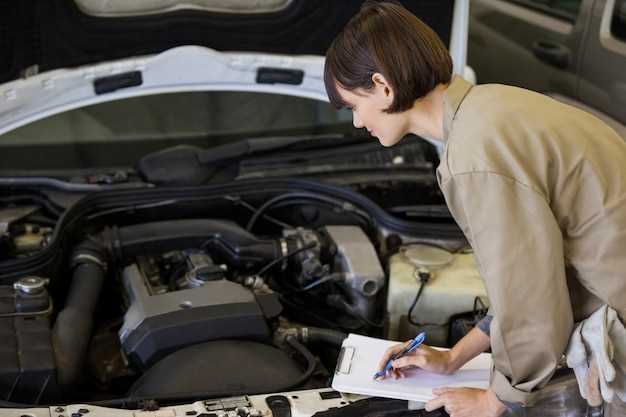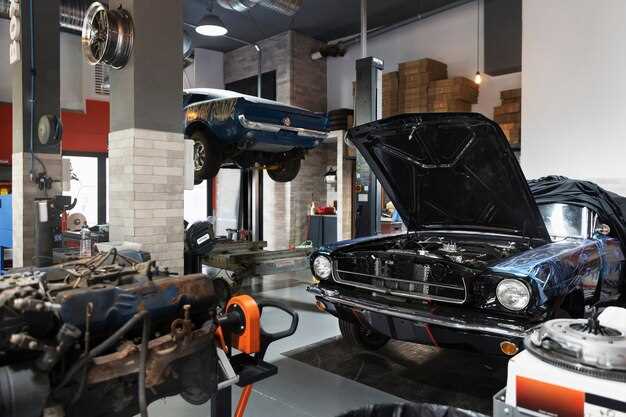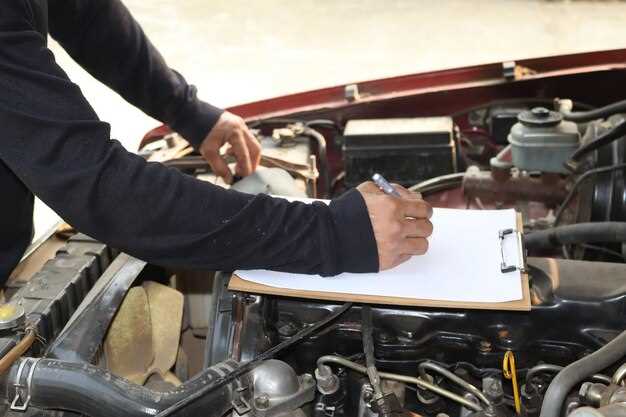
Embarking on a classic car restoration project can be an exhilarating journey, offering car enthusiasts the chance to breathe new life into vintage vehicles. However, before diving into the restoration process, a thorough inspection of the vehicle is crucial. This initial evaluation not only helps to identify potential issues but also sets the foundation for a successful restoration.
During the inspection, it’s essential to look beyond the surface. Check for rust, structural integrity, and the condition of essential components such as the engine, transmission, and suspension. A detailed assessment will provide insight into the extent of restoration needed and help prioritize tasks, ensuring that your project remains organized and manageable.
Moreover, documenting the restoration progress can enhance the overall experience. Keeping a record of each step not only serves as a guide but also adds value to the vehicle once completed. As you delve into this classic car restoration adventure, remember that careful planning and meticulous inspection are the keys to transforming a forgotten relic into a prized possession.
Identifying Key Areas for Restoration Inspection

When embarking on a classic car restoration project, it is crucial to conduct a thorough inspection of the vehicle’s condition. Identifying key areas for inspection not only helps prioritize restoration tasks but also provides insight into the overall feasibility of the project.
Begin with the chassis and frame, as structural integrity is vital for safety and performance. Look for signs of rust, corrosion, or previous repairs that may compromise strength. The condition of these components will significantly influence restoration costs and methods.
Next, assess the bodywork, including panels, doors, and fenders. Check for inconsistencies in paint thickness, which may indicate hidden issues such as filler over rust. Inspect for dents, scratches, and alignment, as these factors will affect both appearance and aerodynamics.
The engine compartment is another critical area. Inspect the engine for leaks, unusual noises, and overall functionality. Components such as the transmission, radiator, and exhaust system should also be examined for wear and damage, ensuring everything is in working order before proceeding with the restoration.
Don’t overlook the interior as well. Evaluate the condition of the upholstery, dashboard, and instrumentation. Signs of wear, sun damage, or mold can significantly impact the comfort and value of the vehicle. Replacement parts may be necessary for components that are beyond repair.
Finally, wheels and suspension should also be inspected. Look for signs of wear in tires, brakes, and shock absorbers. A thorough assessment in these areas will ensure that the vehicle is safe to operate post-restoration and will enhance overall driving performance.
By systematically inspecting these key areas, you can create a comprehensive restoration plan that addresses all essential aspects of the classic car, resulting in a successful restoration project.
Evaluating Vehicle Condition with Detailed Checklists

Assessing the condition of a classic car is a crucial step in the restoration process. A thorough inspection using a detailed checklist ensures that all aspects of the vehicle are accounted for, allowing you to make informed decisions regarding repairs and restoration efforts. Below are key components to include in your evaluation checklist:
- Exterior Inspection:
- Check for rust on the body panels, frame, and undercarriage.
- Inspect paint quality for fading, peeling, or damage.
- Examine glass and trim for cracks, chips, or deterioration.
- Assess the condition of bumpers and other external fittings.
- Interior Condition:
- Evaluate seat upholstery for tears, stains, or wear.
- Inspect dashboards and panels for cracks and functionality of gauges.
- Check carpet condition and look for signs of water damage.
- Test all interior lighting and control switches for proper operation.
- Mechanical Components:
- Inspect the engine for leaks, wear, or modifications.
- Check the transmission for smooth shifting and fluid condition.
- Evaluate suspension components, including shocks and bushings.
- Assess brake systems for wear, including pads, rotors, and lines.
- Electrical Systems:
- Test the battery condition and ability to hold charge.
- Inspect wiring for fraying, corrosion, or modifications.
- Check lighting systems, including headlights, tail lights, and turn signals.
- Evaluate the functionality of any additional electrical accessories.
- Underbody and Chassis:
- Inspect frame integrity for damage or corrosion.
- Check for signs of previous repairs or modifications.
- Examine fuel and exhaust systems for leaks and wear.
- Assess overall cleanliness and status of underbody components.
Using this checklist during your vehicle inspection can reveal vital information about the classic car’s current state and its potential for restoration. Comprehensive evaluations not only help identify the necessary repairs but also provide a clearer picture of the investment required to bring the vehicle back to its former glory.
Budgeting for Common Restoration Challenges
When embarking on a vehicle restoration project, one of the most critical components is effective budgeting. Understanding potential costs associated with restoration challenges can help prevent budget overruns and ensure a smoother project timeline.
A thorough inspection of the vehicle before beginning any restoration work is essential. This step helps uncover hidden issues such as rust, engine problems, or interior damage that may not be immediately apparent. Allocate funds for a comprehensive inspection, which might include professional services to assess the vehicle’s condition accurately.
Another common challenge in restoration is sourcing replacement parts. Depending on the vehicle’s make and model, parts can be difficult to find and often come at a premium. It’s advisable to budget for both expected and unexpected part costs, as prices can vary significantly. Consider joining forums or groups focused on your specific vehicle to connect with other enthusiasts who may have leads on affordable parts or restoration resources.
Labor costs can also escalate during a restoration project. If you’re not undertaking the work yourself, be sure to obtain multiple quotes from skilled professionals. Factor in costs for specialized services such as bodywork or engine rebuilding, as these can rapidly increase the overall expense of the project. Always include a buffer in your budget for labor, as unforeseen complications can arise that require additional time and expertise.
Additionally, consider the costs associated with refinishing and detailing. Whether you’re painting the vehicle or restoring upholstery, quality work often demands a larger investment. It’s wise to set aside funds for finishing touches, as these can make a significant difference in the final appearance and value of the restored vehicle.
In conclusion, being well-prepared financially for common restoration challenges is vital. By allocating enough resources for inspection, parts sourcing, labor, and refinishing, you can ensure a more successful and satisfying restoration project. Careful budgeting will not only help manage expenses but also lead to a vehicle restored to its former glory.




